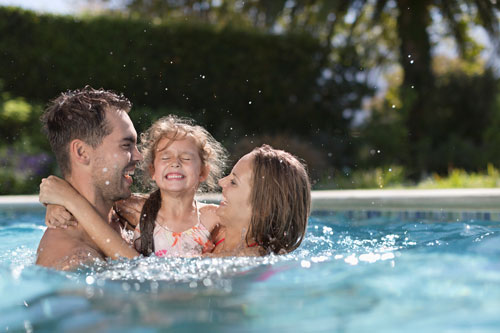Few summer activities are as beloved as a trip to the beach or pool on a hot summer day. But did you know that research has found that people who live with autism are particularly attracted to water?
According to the Autism Society of Florida, “water offers a multisensory experience that fulfills multiple needs at once. The visual aspects of water, like its sparkling, bubbling, and reflective properties, can be particularly captivating. The sensation of water on the skin, combined with the pressure it exerts, can provide a soothing effect and address tactile sensory sensitivities.”
While water offers many engaging sensory experiences, it can also pose significant safety risks for autistic individuals. This is especially the case for people on the autism spectrum who tend to wander, as well as those with communication challenges, poor impulse control, or a lack of situational and environmental awareness.
Shockingly, a study by the Mailman School of Public Health at Columbia University found that children with autism spectrum disorder are 160 times more likely to die from drowning than their neurotypical peers.
So, how do you allow your child to take advantage of the many benefits of swimming and water play without putting them at risk? Here are some precautions you can take.
1. Supervise, supervise, supervise
Drowning can happen fast, quietly and without warning, so even if your child knows how to swim, it’s essential that they be supervised whenever they are in or near the water. This is true even if the pool, beach or lake your family frequents has full-time lifeguards. While it may seem excessive, it’s wise to provide 1:1 supervision of all children in or near the water. If you’re a designated water supervisor, you should avoid reading, using your phone, use of alcohol or drugs, or any other activity that will take your attention away from a child under your supervision.
2. Provide swimming lessons
The ability to swim decreases the likelihood of drowning. Look for a class especially geared toward neurodivergent children where your child can learn to swim, gain knowledge about the dangers of water and understand the safety protocols that prevent drowning or injury. Start early! It’s never too soon to teach children about water safety.
3. Install Protective Barriers and Safety Devices
If you have a pool on your property or live near any sort of body of water, make sure that your child cannot access the water without supervision. Pools should be fenced and gates should be locked and alarmed. If your child tends to wander, install alarms on your home’s doors and windows so you are alerted if he leaves the house. You can take additional steps to protect children who wander by utilizing GPS tracking devices and making sure that they wear ID bracelets and carry identification at all times.
4. Learn CPR
Be prepared if a water emergency happens at a beach, pool or elsewhere. Practice CPR skills long after classes end, so that they’ll be at your fingertips when or if you need to use them.
5. Notify neighbors or emergency responders
If your child is a wanderer, and especially if you know she’s attracted to water, make sure that the people around you know about it. Making others aware of your child’s vulnerabilities can have lifesaving ramifications.


